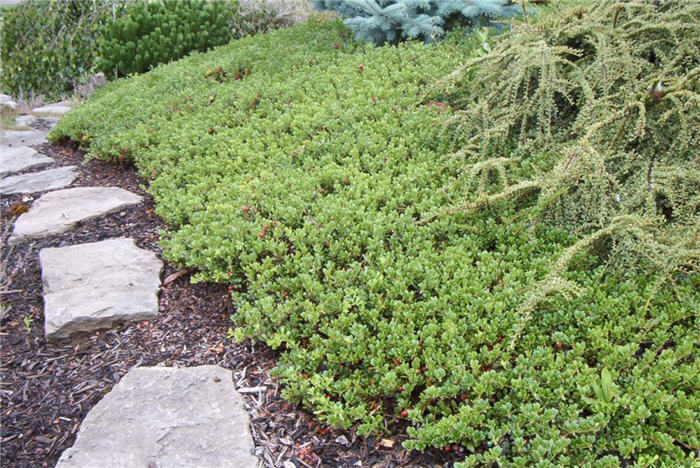| Botanical Name: Arctostaphylos uva-ursi 'Massachusetts' | |
| Common Name: Common Bearberry |

-
Anatomy
-
Culture
-
Design
Plant Type
Broadleaf Evergreen, Shrub, Ground cover
Height Range
Under 1'
Flower Color
Pink, White
Flower Season
Spring
Leaf Color
Dark Green
Bark Color
Grey, Red
Fruit Color
Red
Fruit Season
Summer, Fall
Sun
Half, Shade
Water
Low
Growth Rate
Slow
Soil Type
Sandy, Clay, Loam, Rocky, Unparticular
Soil Condition
Average, Poor, Well-drained, Dry
Soil pH
Acid, Neutral
Adverse Factors
n/a
Design Styles
Mediterranean, Ranch, Seascape, Woodland
Accenting Features
Showy Flowers
Seasonal Interest
Winter, Spring, Summer, Fall
Location Uses
Shrub Border, Foundation, With Rocks
Special Uses
Erosion Control, Filler, Mass Planting, Naturalizing
Attracts Wildlife
Birds, Wildlife
Information by: Stephanie Duer
Photographer:
Photographer:
-
Description
-
Notes
This winter hardy, prostrate, slow-growing, evergreen shrub or ground cover will typically grow to 6 to 12" high and 3 to 6' wide. In the proper environment, bearberry can spread (by stem rooting) to cover a very large area of up to 15' in diameter. Reddish-gray, peeling bark and small, lustrous, dark green leaves which turn reddish brown in winter. Nodding white-tinged pink, heather-like flowers appear in April-May, followed by bright red fruits which last from August through the winter.
Grow in part to full shade, in average to poor, well-drained soils. Slow to established, and it is sensitive to being over-watered. Berries are valued by birds. Plant where it is protected from hot summer sun and drying winter winds. Does not need pruning other than to keep it within the space allotted. A popular western native, there are many cultivars that have been commercial developed, including 'Alaska,' Massachusetts,' 'Point Reyes,' and 'Woods Compact.' Berries are good for birds, but are not recommended for human consumption.